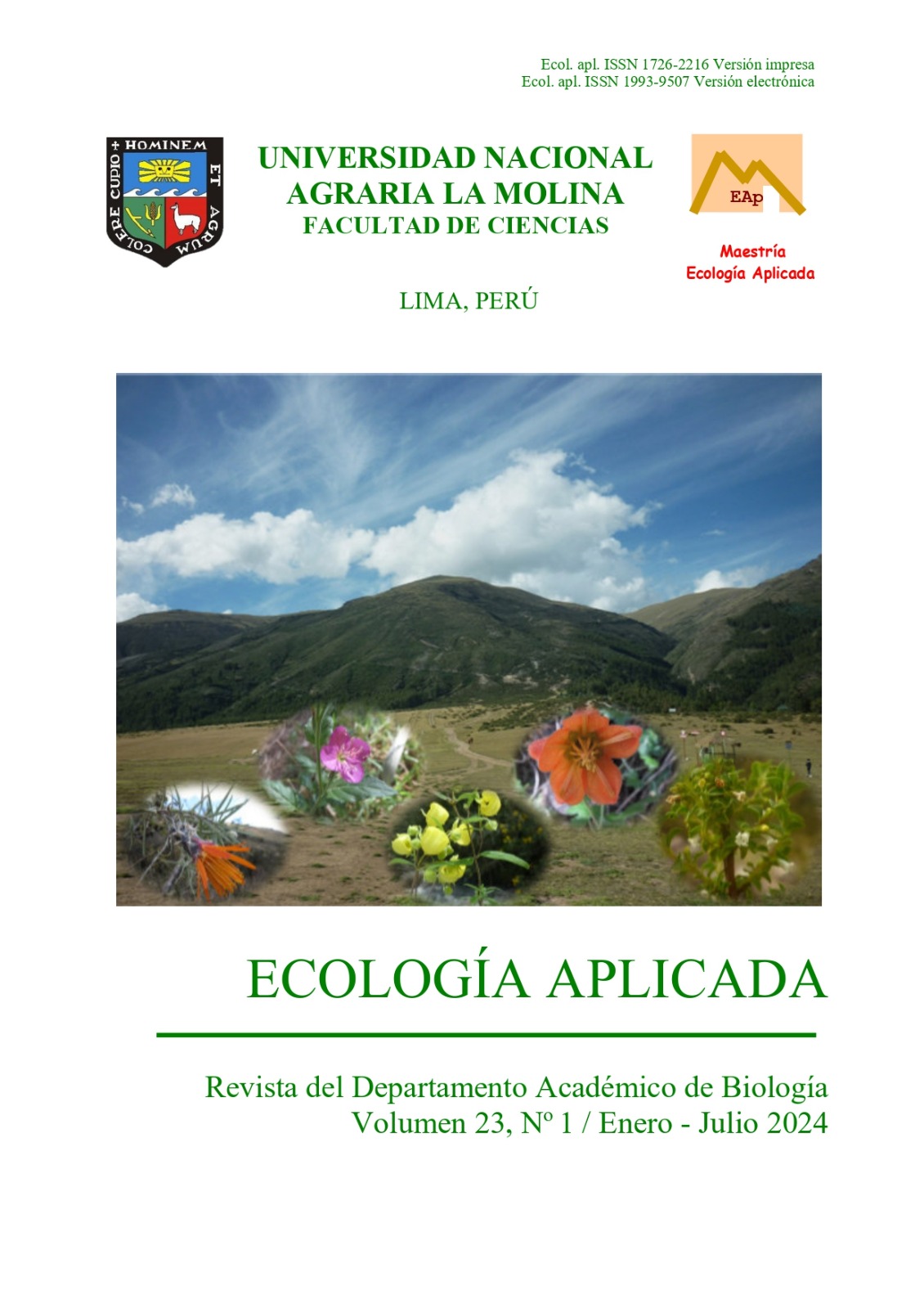USE OF KNOWN INDIVIDUAL MARKING IN RESEARCH AND MONITORING OF FRESHWATER TURTLE POPULATIONS - TESTING THE METHOD ON SOUTH AMERICAN SPECIES (TESTUDINES: PODOCNEMIDIDAE)
DOI:
https://doi.org/10.21704/rea.v23i1.2165Keywords:
conservation, reptiles, tag, PodocnemisAbstract
The marking or tagging of turtles is a widely used to facilitate the monitoring of population demography, structure, and conservation of species. Even though they are used in many studies of turtle demography, the available methods are not very efficient, except for microchips (Passive Intergraded Transponder/PIT tags); however, the latter is too expensive to be used on a large scale. Here we present a viable, cost-effective tagging alternative that uses a durable plastic cattle tag and pin. Turtles in the genus Podocnemis were tagged in the Lower-Amazon region, west of the state of Pará, Amazon, Brazil. This method is highly recommended for future work on monitoring and population structure of large species of freshwater turtles. In addition to feasibility, it can be used in the form of citizen science, as the information can be obtained by laypeople and taken to researchers and conservationists.
Downloads
References
Andrade P.C., Oliveira P.H. Lima A., Duarte J.A., Azevedo S.H., Oliveira A., Junior C.D., Silva E., Garcez J., Pinto J.R., Silva L.C., Monteiro M., Rodrigues W., Anízio T.L., Pontes A.L., Teixeira R., Silva J., Duncan W.L. & Vogt
R. 2022. Community-Based Conservation and Management of Chelonians in the Amazon. Frontiers in Ecology and Evolution, 10: 769328. DOI: 10.3389/fevo.2022.769328.
Balestra R.A., Valadão R., Vogt R.C., Bernhard R., Ferrara C., Brito E., Arias R., Malvásio A., Lustosa A.P., de Souza F.L., Drummond G., Bassetti L.A., Coutinho M.E., Junior P.D., Campos Z.M., Teixeira de Mendonça S.H., Rocha J.daM. & Luz V.L. 2016. Roteiro para Inventários e Monitoramentos de Quelônios Continentais. Biodiversidade Brasileira, 6(1): 114-152. DOI: https://revistaeletronica.icmbio.gov.br/BioBR/article/vie w/471/459.
Bernardes V., Ferrara C., Vogt R.C. & Schneider L. 2014 Abundance and Population Structure of Podocnemis erythrocephala (Testudines, Podocnemididae) in the Unini River, Amazonas. Chelonian Conservation and Biology, 13(1): 89-95. DOI: 10.2744/CCB-1039.1.
Bernhard R., & Vogt R.C. 2012. Population structure of the turtle Podocnemis erythrocephala in the Rio Negro Basin, Brazil. Herpetologica, 68(4): 1-14. DOI: 10.1655/HERPETOLOGICA-D-12-00008.
Bernhard R., Ferrara C., Balestra R.A., Valadão R., Botero- Arias R. & Vogt R.C. 2016. Monitoramento populacional de quelônios amazônicos (Capítulo 9). In: Balestra R.A. (Ed.). Manejo conservacionista e monitoramento populacional de quelônios amazônicos. 79–113. Balestra Instituto Brasileiro do Meio Ambiente e dos Recursos Naturais Renováveis Press. Brasília, DF. DOI: 10.13140/RG.2.2.30201.67683.
Bjorndal K., Bolten A.B., Lagueux C.J. & Chaves A. 1996. Probability of Tag Loss in Green Turtles Nesting at Tortuguero, Costa Rica. Journal of Herpetology. 30(4): 566–571. DOI: https://doi.org/10.2307/1565709. https://www.jstor.org/stable/1565709.
Broderick A.C. & Godley B.J. 1999. Effect of tagging marine turtles on nesting behaviour and reproductive success. Animal Behaviour, 58(3): 587-591. DOI: 10.1006/anbe.1999.1183.
Cagle F.R. 1939. A system of marking turtles for future identification. Copeia, 1939(3): 170-173. DOI: https://doi.org/10.2307/1436818. https://www.jstor.org/stable/1436818.
Cunha F.A.G., Fagundes C.K., Brito E.S., Vogt R.C., Maffei F., Pezzuti J., Felix-Silva D., Rojas-Runjaic F.J.M., Lasso C.A., Morales-Betancourt M.A., De Carvalho V.T., Valsecchi Do Amaral J., Balestra R.A., Acácio M., Malvasio A. & Lustosa A.P. 2021. Distribution of Chelus fimbriata and Chelus orinocensis (Testudines: Chelidae). Chelonian Conservation and Biology, 20(1): 109-115. DOI: 10.2744/CCB-1398.1.
Cunha F.A.G., Fernandes T., Franco J. & Vogt R.C. 2019. Reproductive biology and hatchling morphology of the Amazon toad-headed turtle (Mesoclemmys raniceps) (Testudines: Chelidae), with notes on species morphology and taxonomy of the Mesoclemmys group. Chelonian Conservation and Biology, 18(2): 195-209. DOI: 10.2744/CCB-1271.1.
Doody J.S. & Georges A. 2000. A novel technique for gathering turtle nesting and emergence phenology data. Herpetological Review, 31(4): 220-222. DOI: https://www.dropbox.com/s/bpu8ncwicr17hp5/HR%202 000.31.4.pgs201-232R.pdf?dl=1.
Doody J.S., Young J.E. & Georges A. 2002. Sex differences in activity and movements in the pig-nosed turtle, Carettochelys insculpta, in the wet-dry tropics of Australia. Copeia, 2002(1): 93-103. DOI: 10.1643/0045- 8511(2002)002[0093:SDIAAM]2.0.CO;2.
Fagundes C.K., Amend M. & Ferrara C.R. 2022. The use of Unmanned Aerial Vehicles (UAVs) to Study a Freshwater Turtle Population in the Brazilian Amazon. Herpetological Conservation and Biology. 17: 43-50. DOI:https://www.herpconbio.org/Volume_17/Issue_1/Fagun des_etal_2022.pdf.
Fagundes C.K., Vogt R.C., De Souza R.A. & De Marco-Jr. P. 2018. Vulnerability of turtles to deforestation in the Brazilian Amazon: indicating priority areas for conservation. Biological Conservation, 226: 300-310. DOI: 10.1016/j.biocon.2018.08.009
Ferner J.W. 2007. A review of marking and individual recognition techniques for amphibians and reptiles. Herpetological Circular No. 35. SOCIETY FOR THE STUDY OF AMPHIBIANS AND REPTILES. DOI:https://ssarherps.org/wp-content/uploads/2023/07/HC- 35-Marking-Techniques-2nd-ed.pdf.
Ferrara C.R., Fagundes C.K., Morcatty T. & Vogt R.C. 2017. Quelônios Amazônicos: Guia de identificação e distribuição. WCS (Wildlife Conservation Society) Press. Manaus, AM. DOI: https://global.wcs.org/DesktopModules/Bring2mind/DM X/API/Entries/Download?EntryId=36763&PortalId=93 &DownloadMethod=attachment.
Forero-Medina G., Ferrara C.R., Vogt R.C., Fagundes C.K., Balestra R.A.M., Andrade P.C.M., Lacava R., Bernhard R., Lipman A.J., Lenz A.J., Ferrer A., Calle A., Aponte A.F., Calle-Rendón B.R., Santos C., Perrone E., Miraña E., Cunha F.A.G., Loja E., Del Rio J., Vera J.L., Hermández O.E., Del Aguila R., Pino R., Cueva R., Martinez S., Campos V., Sainz L. & Horne B.D. 2019. On the future of the Giant South American River Turtle (Podocnemis expansa). Oryx, 55(1): 73-80. DOI: 10.1017/S0030605318001370.
Huestis D.L. & Meylan P.A. 2004. The turtles of Rainbow Run (Marion County, Florida): observations on the genus Pseudemys. Southeastern Naturalist, 3(4): 595–612. DOI: http://dx.doi.org/10.1656/1528- 7092(2004)003[0595:TTORRM]2.0.CO;2.
Limpus C.J. 1992. Estimation of tag loss in marine turtle research. Wildlife Research, 19(4): 457-469. DOI: https://doi.org/10.1071/WR9920457.
Mrosovsky N. 1976. The tag loss problem. Marine Turtle Newsletter, 1: 3-4. DOI: http://www.seaturtle.org/mtn/archives/mtn1/mtn1p3.sht ml. http://www.seaturtle.org/mtn/PDF/MTN1.pdf.
Munscher E.C., Walde A.D., Riedle J.D., Hootman T., Weber A.S., Osborne W., Brown J., Ross S., Butterfield B.P. & Hauge J.B. 2022. Population metrics for two the Perceived Common and Abundant Peninsula Cooter and Florida Red-bellied Cooter in a Florida, USA, Spring Ecosystem. Herpetological Conservation and Biology, 17(1): 51-66. DOI: https://www.herpconbio.org/Volume_17/Issue_1/Munsc her_etal_2022.pdf.
Plummer M.V. & Ferner J.W. 2012. Marking reptiles (Chapter nine). In: McDiarmid R.W., Foster M.S., Guyer C., Gibbons J.W. & Chernoff N. (Eds). Reptile Biodiversity: Standard Methods for Inventory and Monitoring. 143-150. University of California Press. Berkeley, CA. DOI: https://www.ucpress.edu/book/9780520266711/reptile- biodiversity.
Reisser J., Proietti M., Kinas P. & Sazima I. 2008. Photographic identification of sea turtles: method description and validation, with as estimation of tag loss. ESR (Endangered Species Research), 5: 73-82. DOI: 10.3354/esr00113.
Rhodin A.G.J., Iverson J.B., Bour R., Fritz U., Georges A., Shaffer H.B. & Van Dijk P.P. 2021. Turtles of the world: annotated checklist and atlas of taxonomy, synonymy, distribution, and conservation status. Nineth edition. In: Rhodin, A.G.J., J.B. Iverson, P.P. van Dijk, R.A. Saumure, K.A. Buhlmann, P.C.H. Pritchard, & R.A. Mittermeier (Eds.). Conservation Biology of Freshwater Turtles and Tortoises: A Compilation Project of the IUCN/SSC Tortoise and Freshwater Turtle Specialist Group. Chelonian Research Monographs, 8: 1-472. DOI: 10.3854/crm.8.checklist.atlas.v9.2021.
Stanford C.B., Iverson J.B., Rhodin A.G.J., Van Dijk P.P., Mittermeier R.A., Kuchling G., Berry K.H., Bertolero A., Bjorndal K.A., Blanck T.E.G., Buhlmann K.A, Burke R.L., Congdon J.D., Diagne T., Edwards T., Eisemberg C.C., Ennen J.R., Forero-Medina G., Frankel M., Fritz U., Gallego-García N., Georges A., Gibbons J.W., Gong S., Goode E.V., Shi H.T., Hoang H., Hofmeyr M.D., Horne B.D., Hudson R., Juvik J.O., Kiester R.A., Koval P., Le M., Lindeman P.V., Lovich J.E., Luiselli L., McCormack T.E.M., Meyer G.A., Páez V.P., Platt K., Platt S.G., Pritchard P.C.H., Quinn H.R., Roosenburg W.M., Seminoff J.A., Shaffer H.B., Spencer R., van Dyke J.U., Vogt R.C. & Walde A.D. 2020. Turtles and tortoises are in trouble. Current Biology, 30: R721-R735. DOI: 10.1016/j.cub.2020.04.088.
Stanford C.B., Rhodin A.G.J., Van Dijk P.P., Horne B.D., Blanck T., Goode E.V., Hudson R., Mittermeier R.A., Currylow A., Eisemberg C., Frankel M., Georges A., Gibbons P.M., Juvik J.O., Kuchling G., Luiselli L., Haitao S., Singh S. & Walde A. (Eds). 2018. Turtles in Trouble: The World’s 25+ Most Endangered Tortoises and Freshwater Turtles – 2018. Turtle Conservation Coalition: IUCN SSC Tortoise and Freshwater Turtle Specialist Group, Turtle Conservancy, Turtle Survival Alliance, Turtle Conservation Fund, Chelonian Research Foundation, Wildlife Conservation Society, Global Wildlife Conservation. Ojai, California. DOI: https://portals.iucn.org/library/sites/library/files/docume nts/2018-017-En.pdf.
Vogt R.C. 1980. New methods for trapping aquatic turtles. Copeia, 1980(2): 368-371. DOI. 10.2307/1444023.
Vogt R.C. 2008. Turtles of the Amazon. Walter H. Wust Ediciones S.A.C. Lima.
Vogt R.C. 2012. Detecting and Capturing Turtles in Freshwater Habitats. In: McDiarmid R.W., Foster M.S., Guyer C., Gibbons J.W. & Chernoff N. (Eds.). Reptile Biodiversity: Standard Methods for Inventory and Monitoring. 181–186. University of California Press, California. https://www.ucpress.edu/book/9780520266711/reptile- biodiversity.
Downloads
Published
Issue
Section
License
Copyright (c) 2024 Fábio Andrew G. Cunha, Marcelo Ândrade

This work is licensed under a Creative Commons Attribution-NonCommercial 4.0 International License.



